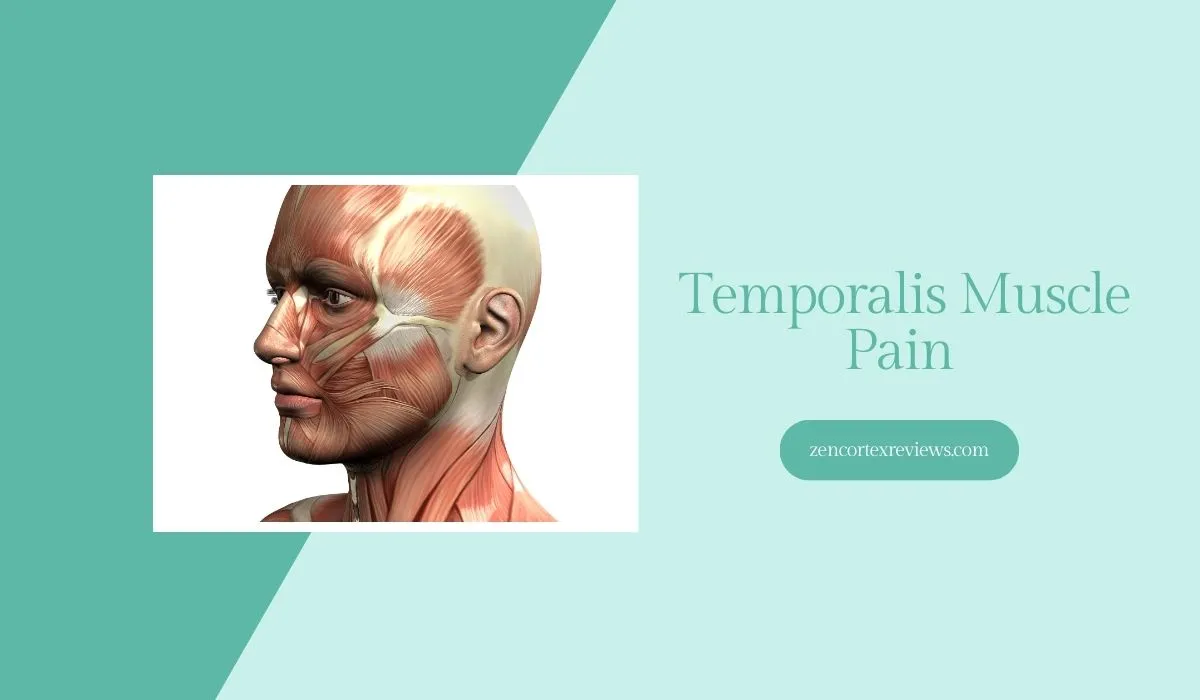Understanding Temporalis Muscle Pain: Causes, Symptoms, and Treatments
Temporalis muscle discomfort on sides of head impacts daily life. Causes include TMJ, teeth grinding, dental work. Symptoms like headaches, jaw pain. Treatments range from medications to physical therapy. Prevention through stress management, night guards

Disclaimer: Our recommendations are sincere, driven by the products’ benefits. When you buy through our links, we may earn a commission, backing our testing and development at no extra cost to you.
Pain in the temporalis muscle, located on the sides of the head, can be a debilitating and distressing condition that affects many individuals. This muscle plays a crucial role in chewing, speaking, and other facial movements, making it a significant issue that can impact daily activities and overall quality of life. In this article, we will explore the causes, symptoms, and various treatment options for this condition, providing insight into this often-overlooked problem.
What is the Temporalis Muscle?

The temporalis muscle is one of the primary muscles responsible for the movement of the jaw and mandible (lower jawbone). It is a fan-shaped muscle located on the side of the head, covering a large portion of the temple area. This muscle originates from the temporal bone and inserts into the coronoid process of the mandible.
When the temporalis muscle contracts, it facilitates the act of closing the mouth and biting down, making it essential for chewing and speaking. Additionally, it plays a role in various facial expressions and movements.
Causes of Discomfort in This Muscle
This muscle pain can arise from various factors, including:
- Temporomandibular Joint (TMJ) – Disorders One of the most common causes is TMJ disorders, which involve problems with the jaw joint and surrounding muscles. TMJ disorders can result from jaw injury, teeth grinding (bruxism), stress, or misalignment of the bite.
- Teeth Clenching or Grinding (Bruxism)– Chronic teeth clenching or grinding, also known as bruxism, can lead to excessive tension and strain on the temporalis muscle, causing pain and discomfort. Bruxism is often associated with stress, anxiety, or sleep disorders.
- Dental Procedures and Oral Surgery – Certain dental procedures, such as wisdom tooth removal or extensive dental work, can cause temporary or prolonged temporalis muscle pain due to the required jaw movements and muscle strain during the procedure.
- Trauma or Injury – Direct trauma or injury to the temporalis muscle or surrounding areas, such as from a blow to the head or a fall, can result in inflammation and pain.
- Stress and Tension – Chronic stress and tension can contribute to the tightening and overuse of the temporalis muscle, leading to pain and discomfort.
- Myofascial Pain Syndrome – Myofascial pain syndrome is a condition characterized by the presence of trigger points (knots) in muscles, which can cause referred pain in other areas, including the temporalis muscle region.
Symptoms of This Condition
The primary symptom is, unsurprisingly, pain or discomfort in the temple area of the head. However, additional symptoms may accompany it, including:
- Headaches or migraines
- Jaw pain or stiffness
- Difficulty chewing or opening the mouth wide
- Ear pain or ringing in the ears (tinnitus)
- Facial pain or tenderness
- Teeth grinding or clenching
In severe cases, this muscle discomfort can be debilitating, making it challenging to perform everyday tasks and significantly impacting one’s quality of life.
Treating This Muscle Discomfort
- Medications – Over-the-counter pain medications, such as acetaminophen, ibuprofen, or naproxen, can help alleviate this condition by reducing inflammation and relieving discomfort. In more severe cases, your healthcare provider may prescribe muscle relaxants or other medications to manage the pain.
- Dental Splints or Night Guards – If this muscle discomfort is related to teeth grinding or clenching (bruxism), your dentist may recommend wearing a dental splint or night guard. These devices help protect the teeth and reduce excessive muscle strain during sleep.
- Physical Therapy and Massage – Physical therapy and massage techniques can help relax and stretch the temporalis muscle, reducing tension and promoting healing. Specific exercises and stretches may be recommended to alleviate pain and improve jaw mobility.
- Heat and Cold Therapy Applying heat or cold packs to the affected area can provide temporary relief. Heat therapy can help relax the muscles, while cold therapy can reduce inflammation.
- Stress Management Techniques Since stress and tension can contribute to this condition, incorporating stress management techniques, such as relaxation exercises, meditation, or counseling, can be beneficial in managing the condition.
- Trigger Point Injections In cases of myofascial pain syndrome or persistent trigger points, your healthcare provider may recommend trigger point injections. These injections involve administering a combination of medications directly into the trigger point, helping to alleviate pain and promote muscle relaxation.
- Surgical Intervention In rare and severe cases, where this muscle discomfort is caused by a structural issue or injury, surgical intervention may be necessary. However, this is typically considered a last resort when other conservative treatments have been unsuccessful.
Prevention Strategies
To help prevent or reduce the risk of this condition, consider the following preventive measures:
- Practice stress management techniques to reduce tension and clenching
- Maintain good posture and ergonomics, especially when working or using electronic devices
- Avoid excessive jaw clenching or teeth grinding (bruxism)
- Wear a night guard or dental splint if recommended by your dentist
- Maintain a balanced diet and stay hydrated
- Engage in regular exercise and stretching to promote muscle relaxation
Related: Understanding Abductor Hallucis Muscle Pain: A Comprehensive Guide
Conclusion: Temporalis Muscle Pain
This muscle discomfort can significantly impact an individual’s daily life and overall well-being. If you experience persistent or severe pain, it is essential to seek professional medical attention. Your healthcare provider or dentist can properly evaluate your condition, identify the underlying cause, and recommend the appropriate treatment plan.
While self-care measures and over-the-counter remedies may provide temporary relief, addressing the root cause is crucial for long-term management and prevention of further complications. By working closely with healthcare professionals and incorporating lifestyle modifications, individuals can effectively manage and potentially alleviate this condition, improving their quality of life.
Lindsay Martinez
Lindsay Martinez, Au.D., is a licensed audiologist with over 10 years of experience in the field of hearing healthcare. She earned her Doctor of Audiology degree from the University of California, Los Angeles, and currently practices at Martinez Hearing Clinic, a leading audiology practice in the San Francisco Bay Area. As an expert in diagnosing and treating a wide range of hearing disorders, Dr. Martinez specializes in fitting advanced hearing aids and assistive listening devices. She is a fellow of the American Academy of Audiology and has published numerous peer-reviewed articles on topics such as noise-induced hearing loss and the latest innovations in hearing technology. Passionate about patient education, Dr. Martinez is committed to helping her patients improve their hearing and overall quality of life.
